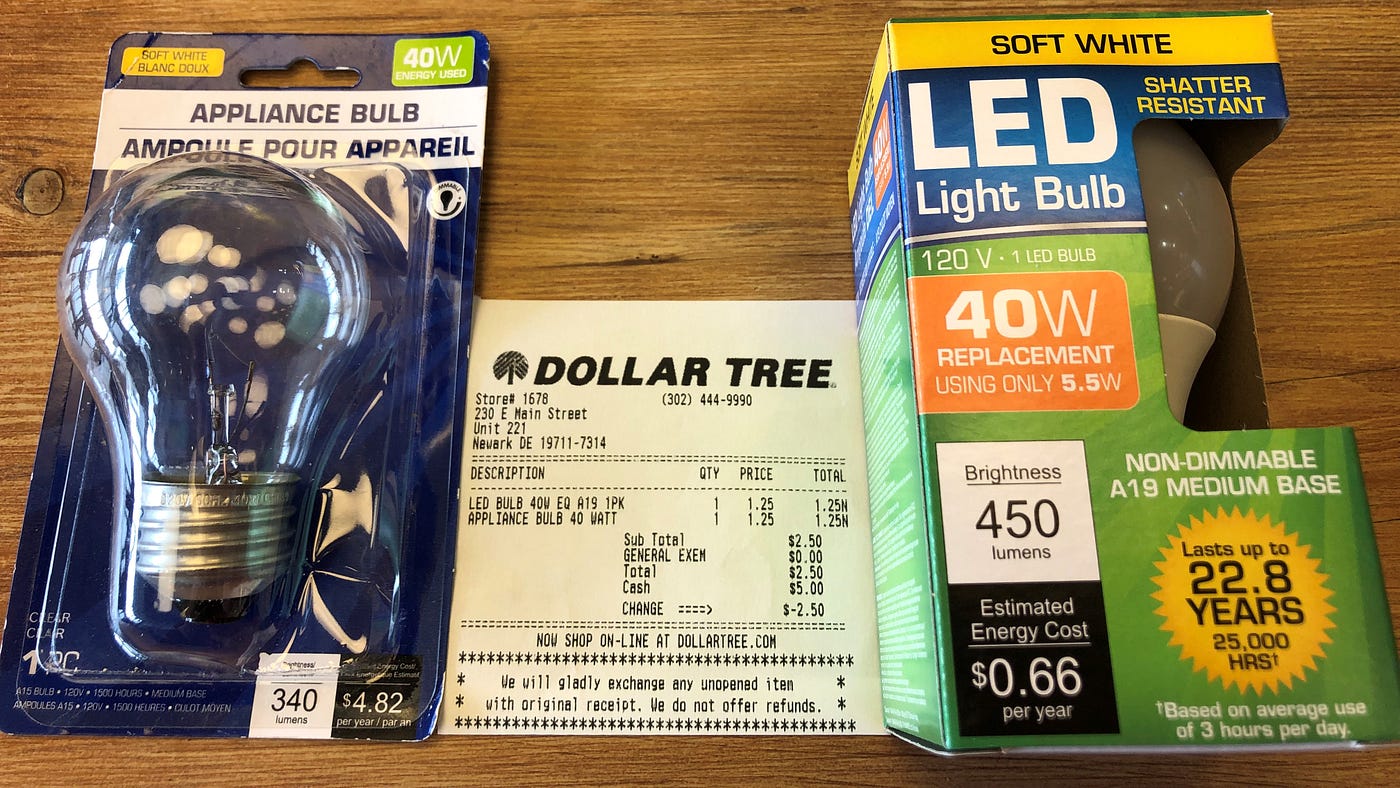Energy Efficiency: A Trip to Dollar Tree
By: Michael Smith
Powering Our Future | July 6, 2022
Energy efficiency, in its simplest terms, is using less energy to complete the same task. Not only does energy efficiency protect the environment by reducing emissions, it can provide significant savings for homeowners and businesses that are looking to lower their monthly utility bills.
For example, LED light bulbs produce the same amount of light as their older, less efficient counterparts (namely incandescent, halogen and CFL bulbs) while using a fraction of the energy. A 40-watt incandescent light bulb can be replaced by an LED light bulb that uses only 5.5 watts. That is an energy savings of over 85%! And due to advances in production technics, LED light bulbs are becoming cost competitive even ignoring the energy savings they provide.
Don’t believe me? Here is a photo I took after a recent visit to the Dollar Tree on Main Street in Newark, Delaware. Both the 40-watt incandescent light bulb (left) and the 40-watt equivalent LED light bulb (right) were $1.25. However, the incandescent is estimated to cost $4.82 a year to run, while the LED will cost only 66 cents. These light bulbs can be used in the same socket and produce the same warm “color temperature” (2700K, to be specific).

The LED bulb also has a lifespan of 25,000 hours (roughly 22.8 years if used 3 hours a day)vs the incandescent bulb’s paltry 1,500 hours (1.4 years). On top of that, the LED light bulb is shatter resistant and is about 110 lumens brighter than the incandescent. The one benefit of this particular incandescent is that it can be dimmed if desired, while this particular LED bulb cannot.
However, one can buy all types of dimmable LED light bulbs at a reduced price from the Energize Delaware Martketplace. The EPA estimates that, by replacing every incandescent bulb with an LED in the average home (about 40 bulbs), families can prevent the equivalent of over one metric ton of CO2 emissions each year. Multiply that over the course of an entire neighborhood, city or even state, and you get an incredible positive impact for the planet!